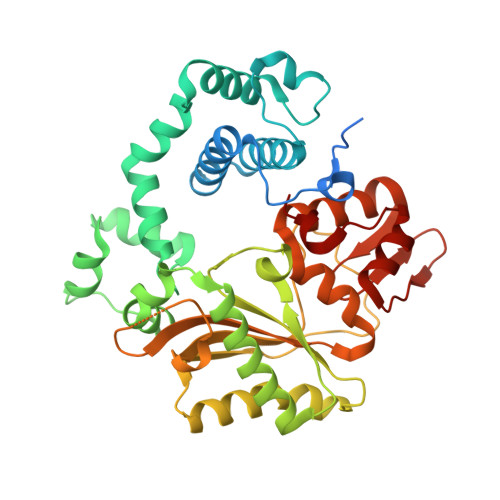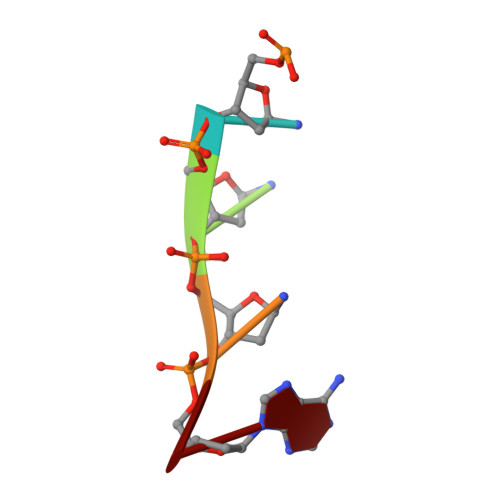Structures of Intermediates along the Catalytic Cycle of Terminal Deoxynucleotidyltransferase: Dynamical Aspects of the Two-Metal Ion Mechanism.
Gouge, J., Rosario, S., Romain, F., Beguin, P., Delarue, M.(2013) J Mol Biol 425: 4334-4352
- PubMed: 23856622
- DOI: https://doi.org/10.1016/j.jmb.2013.07.009
- Primary Citation of Related Structures:
4I27, 4I28, 4I29, 4I2A, 4I2B, 4I2C, 4I2D, 4I2E, 4I2F, 4I2G, 4I2H, 4I2I, 4I2J - PubMed Abstract:
Terminal deoxynucleotidyltransferase (Tdt) is a non-templated eukaryotic DNA polymerase of the polX family that is responsible for the random addition of nucleotides at the V(D)J junctions of immunoglobulins and T-cell receptors. Here we describe a series of high-resolution X-ray structures that mimic the pre-catalytic state, the post-catalytic state and a competent state that can be transformed into the two other ones in crystallo via the addition of dAMPcPP and Zn(2+), respectively. We examined the effect of Mn(2+), Co(2+) and Zn(2+) because they all have a marked influence on the kinetics of the reaction. We demonstrate a dynamic role of divalent transition metal ions bound to site A: (i) Zn(2+) (or Co(2+)) in Metal A site changes coordination from octahedral to tetrahedral after the chemical step, which explains the known higher affinity of Tdt for the primer strand when these ions are present, and (ii) metal A has to leave to allow the translocation of the primer strand and to clear the active site, a typical feature for a ratchet-like mechanism. Except for Zn(2+), the sugar puckering of the primer strand 3' terminus changes from C2'-endo to C3'-endo during catalysis. In addition, our data are compatible with a scheme where metal A is the last component that binds to the active site to complete its productive assembly, as already inferred in human pol beta. The new structures have potential implications for modeling pol mu, a closely related polX implicated in the repair of DNA double-strand breaks, in a complex with a DNA synapsis.
Organizational Affiliation:
Unité de Dynamique Structurale des Macromolécules, Institut Pasteur, UMR 3528 du CNRS, 25 rue du Dr Roux, 75015 Paris, France.


















